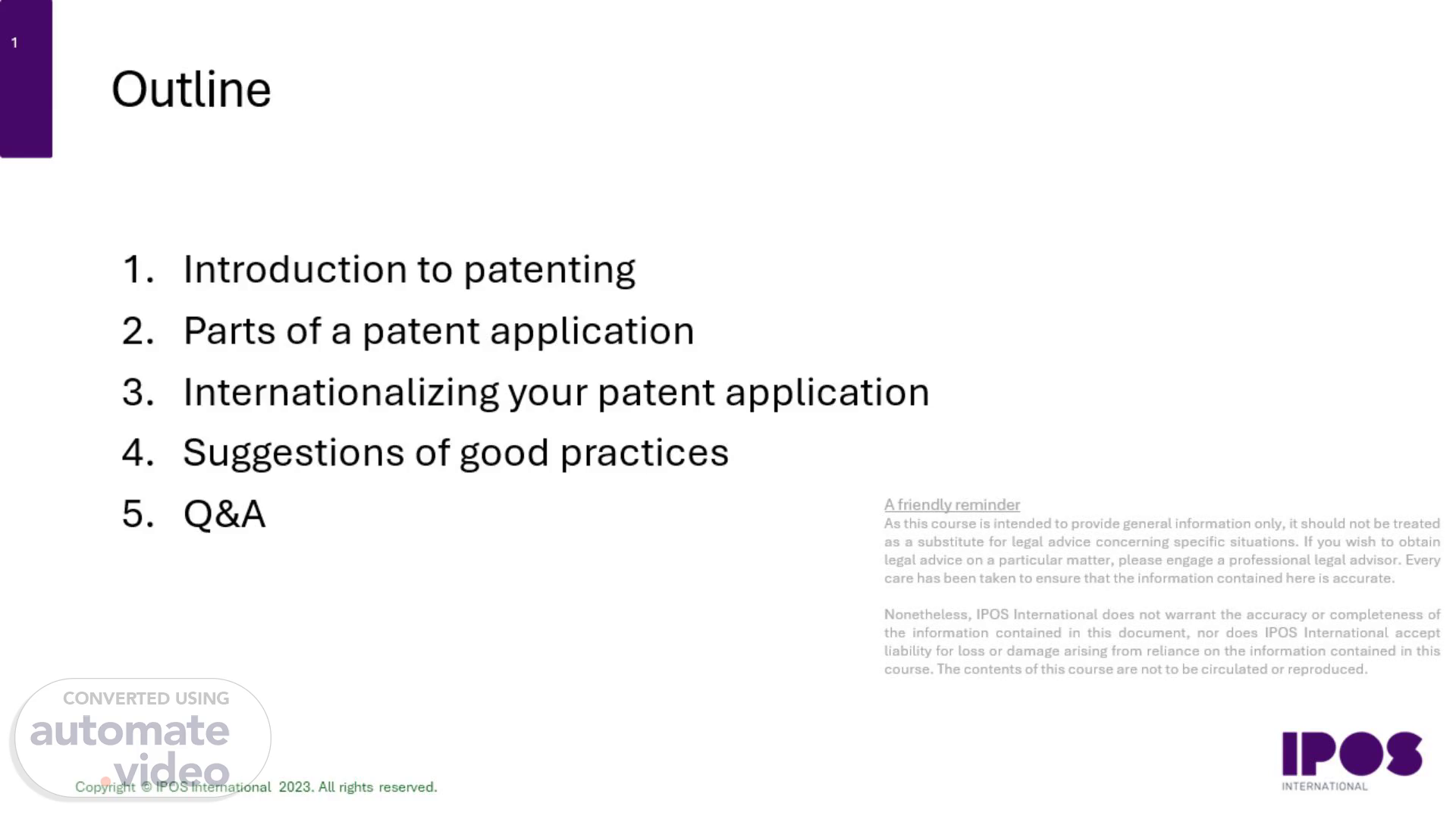Scene 1 (0s)
[Audio] Before we start the course, I would like to remind everyone that this course is intended to provide general information only. It should not be considered a substitute for legal advice concerning specific situations. If you wish to obtain legal advice on a particular matter, please consult with a professional legal advisor. Alright, let's get started! Following along on the slides, you'll see the outline for today's course. We'll first explore what patenting is and delve into some essential patentability concepts. Then, we'll cover the parts of a patent application, considering international patent filing, and some suggestions for best practices. At the end of the session, there will be a Q&A, but don't hesitate to raise questions during the session as well..
Scene 2 (46s)
[Audio] all right, let's kick start the first topic on introduction to patenting..
Scene 3 (52s)
[Audio] A patent is a grant of legal rights to the owner of the invention. It can be used to prevent others from using or exploiting the invention without their consent. The word 'patent' comes from a Latin phrase meaning "open letters." These letters were issued during Medieval times to confer rights and privileges to specific people. The picture on the screen is the first U-S patent issued to Samuel Hopkins on July 31, 1790, for a potash production technique. As you can see, this very first patent had the unique number X 001! The holder of this first patent, Samuel Hopkins, was a Philadelphia merchant. His patent was for a method of making potash, an essential component in fertilizer production. At the time, the patent filing process was less formalized compared to the modern system, and the criteria for granting patents were less stringent. There was another interesting requirement: every patent had to be signed by the President to be official. Do you want to make a guess who was the president at the time in 1790? During this period, George Washington was the president, and it is said that he signed 150 patents during his presidency. The protection period for a patent is generally 20 years. Do you know why patent protection has a limited term? You can find out the answer from the next slide..
